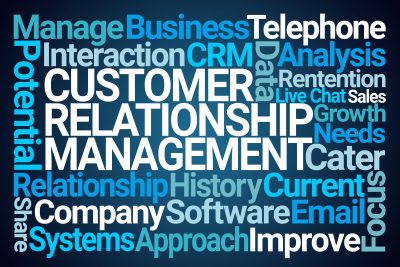Since the 1980’s when CRM was then known as Database Marketing, getting inside knowledge about your customers meant that you could spend your hard-earned marketing budget where it will be most effective.
Whilst there were large businesses developing Enterprise Database solutions on mainframes in the 70’s, the growth came from the smaller providers in the Mid 80’s selling contact management solutions such as ACT, Goldmine, and Maximiser. This delivered a single customer view and made selling a lot more targeted.
In the mid 90’s CRM (Customer Relationship Management) became the de facto identity for building Customer relationships – the clue being in the name! Then over the years these offerings grew into ERP’s (Enterprise Resource Planning) and added other functions of the business like Product Management, Manufacturing and Accounts systems.
In the late 90’s cloud technology meant that CRM could be bought by businesses at an affordable level which meant they didn’t need to invest in expensive on-site servers and SalesForce was born as Software as a Service (SaaS) so you could pick a package to suit your needs and budget.
Through the 2000’s CRM was beginning to take off and SaaS solutions became the preferred choice. However, as competition grew amongst the CRM SaaS suppliers, so too did the size and choice of packages that were being offered. Businesses knew that they needed to get a CRM and turned to cloud based SaaS solutions for the answer but now they were having to choose from individually priced columns of options which had functions in them that were either not required or were in other columns.
So businesses had to compromise with their selection and integrated their SaaS CRM into the IT infrastructure. However, more often than not, this decision was not backed up with a CRM strategy or the input of those who were going to use it. Even with training, if the sales and marketing user teams felt it didn’t add any value to their current work processes, the CRM wouldn’t get used so making the process and data ineffectual.
With price driving most decisions and with Digital Transformation being the underlying strategy for businesses to take advantage of their chosen markets, Businesses can now get a CRM solution designed to meet their exact needs and more importantly, the workflow of those who are going to use it.
Today, the cost for an SME to invest in a customised/bespoke solution is now competitive with the online SaaS solutions. This means that having a written CRM strategy and input from those that will be using a CRM (the stakeholders), a businesses can get the solution that meets their unique requirements and choose functions that are relevant to help that business move forward. As time goes on, new functions can be added again to meet the growth requirements of that business and at a cost that is affordable.
So what would you prefer – a Customised/Bespoke solution that you can “grow into” or one off the shelf? If the former, check out CRM Engine which can be tailored to your precise requirements, when you need them.
If you want some help choosing, contact me at [email protected] or phone on 07786 228553

